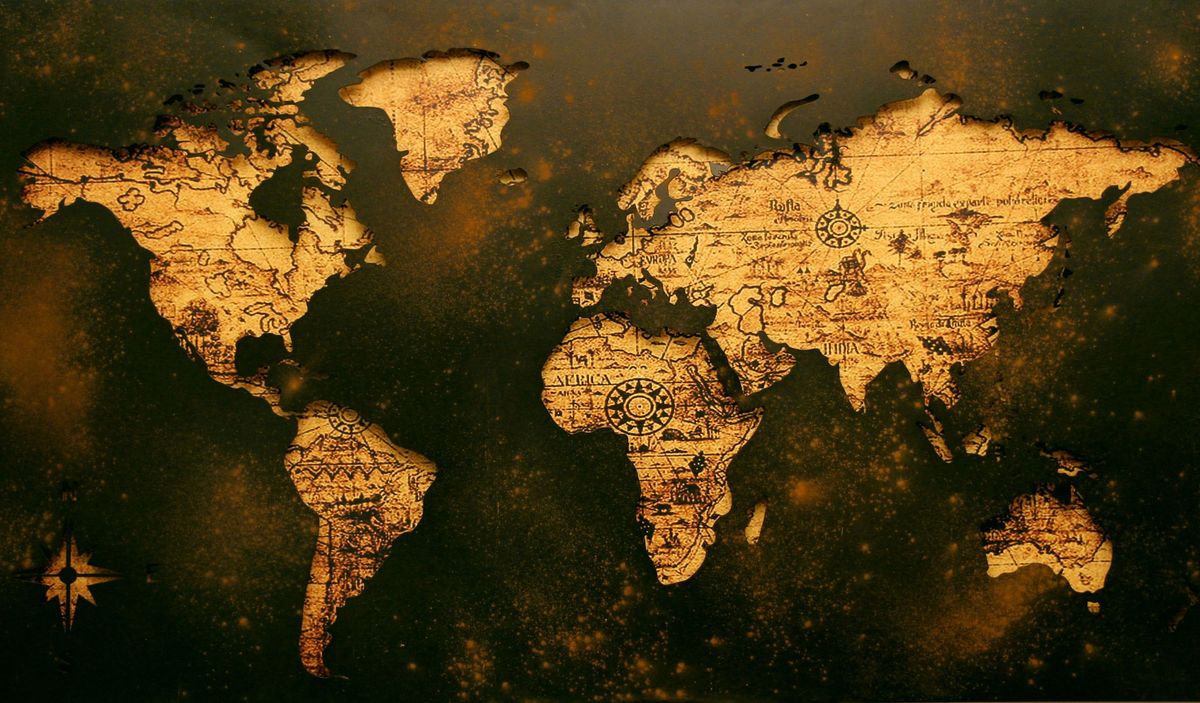Geography is a fascinating subject that allows us to explore and understand the world around us. To effectively study and analyze the Earth's diverse landscapes and human activities, geographers have identified five fundamental themes. These themes, namely Location, Place, Human-Environment Interaction, Movement, and Regions, provide a framework for comprehending the complex relationships between people and their environment. In this article, we will delve into each theme, providing clear explanations and engaging examples that will help you grasp the essence of geography in an informative and accessible manner.
Location
Location serves as the foundation of geography and helps us pinpoint where things are situated on the Earth's surface. It can be divided into two types: absolute location and relative location.
Absolute location refers to the precise position of a place on the Earth's grid system using latitude and longitude coordinates. For example, the absolute location of the Eiffel Tower in Paris, France is approximately 48.8584° N, 2.2945° E.
On the other hand, relative location refers to the position of a place in relation to other landmarks or regions. For instance, we could describe Paris as located in the north-central part of France, along the banks of the Seine River.
Understanding location is essential in various contexts, such as navigation, urban planning, and even everyday life. By knowing where things are, we can better appreciate the interconnectedness and spatial relationships between different places on our planet.

Example of Location
Let's consider the location of New York City, one of the most iconic cities in the United States. Its absolute location is approximately 40.7128° N, 74.0060° W, placing it on the east coast of the country. In terms of relative location, New York City is located at the mouth of the Hudson River, overlooking the Atlantic Ocean. This position has made it a crucial hub for trade and cultural exchange throughout history.
Place
The theme of Place goes beyond simple physical locations and examines the unique characteristics and attributes that distinguish one place from another. These characteristics encompass both the physical and human aspects of a location.
Physical characteristics include natural features like landforms, climate, vegetation, and bodies of water. For example, the Amazon Rainforest in South America is renowned for its lush biodiversity and the mighty Amazon River.
Human characteristics encompass the human-made elements found in a place, such as buildings, infrastructure, language, customs, and traditions. The architecture of cities like Rome or the cultural practices of the Maasai people in East Africa exemplifies the rich human characteristics that define places.
By understanding the distinctive physical and human characteristics of a place, we can appreciate its uniqueness and better comprehend the complexities of the world we inhabit.

Example of Place
Tokyo, the capital city of Japan, provides a remarkable example of Place. Physically, Tokyo is situated on the eastern coast of Honshu Island and experiences a humid subtropical climate. The cityscape is characterized by towering skyscrapers, advanced transportation systems, and vibrant street life, all contributing to its dynamic atmosphere.
Culturally, Tokyo is renowned for its blend of tradition and modernity. Visitors can witness ancient temples like Senso-ji standing alongside cutting-edge technology hubs such as Akihabara. The juxtaposition of historical landmarks and futuristic developments highlights the diverse human characteristics that define Tokyo as a unique place.
Human-Environment Interaction
The theme of Human-Environment Interaction explores the intricate relationship between humans and their surroundings. It focuses on how people modify, adapt to, and depend on their environment, as well as the environmental consequences of human actions.
Humans interact with their environment in various ways. They can modify the physical landscape through activities like agriculture, construction, and mining. Furthermore, humans adapt to their environment by developing specific cultural practices, technology, and clothing to suit the climate and geography of a place.
Human actions can also have significant environmental consequences. For instance, deforestation, pollution, and climate change are all outcomes of human activities that impact the environment on a global scale.
Understanding human-environment interaction is vital for sustainable development and the preservation of our planet's natural resources. By considering the reciprocal relationship between humans and the environment, we can strive for more harmonious coexistence.

Example of Human-Environment Interaction
The Netherlands offers a compelling example of human-environment interaction. A significant portion of the country lies below sea level, making it vulnerable to flooding. To mitigate this risk, the Dutch have implemented an extensive system of dikes, canals, and polders (reclaimed land). These engineering marvels showcase how humans modify their environment to protect themselves from natural hazards.
Additionally, the Dutch have a long-standing tradition of land reclamation, creating new habitable areas and expanding agricultural land. This demonstrates how humans adapt to their environment by utilizing innovative techniques to thrive in challenging geographical conditions.
Movement
The theme of Movement examines how people, goods, ideas, and information traverse the Earth's surface. It encompasses both physical movements, such as migration and transportation, as well as the flow of intangible elements like communication and cultural diffusion.
Physical movement involves the relocation of people and goods from one place to another. It can be driven by various factors, including economic opportunities, political instability, or the pursuit of a better quality of life. Global trade, international tourism, and patterns of migration all exemplify the multifaceted nature of the human movement.
Cultural and information movement, on the other hand, focuses on the diffusion and exchange of ideas, beliefs, and innovations. The spread of religions, the adoption of foreign cuisines, and the rapid dissemination of news and media across the globe are all examples of cultural and information movement.
Understanding the patterns and processes of movement is crucial for comprehending global interconnectedness, cultural exchange, and the challenges and opportunities that arise from increased mobility in the modern world.

Example of Movement
Consider the movement of goods and services in the global economy. The rise of containerization and advancements in transportation technology, such as cargo ships and airplanes, has dramatically facilitated the movement of products worldwide. This interconnectedness enables us to enjoy fruits from distant continents, purchase goods manufactured in different countries, and experience cultural diversity through international travel.
Regions
Regions refer to areas that share common characteristics or qualities, allowing us to classify and organize the world into manageable units. These characteristics can include physical features, climate patterns, cultural practices, or economic activities.
Regions can be categorized at various scales, from local to global. They help us understand the similarities and differences that exist between places and provide a framework for analyzing spatial patterns and processes.
Formal regions are defined by specific criteria, such as political boundaries or language groups. Examples include countries, states, or provinces.
Functional regions are defined by interactions and connections between places. These regions often have a central hub that serves as a focal point, and the surrounding areas depend on it economically or socially. Metropolitan areas and transportation networks are typical examples of functional regions.
Vernacular regions, also known as perceptual regions, are based on people's subjective perceptions or feelings about an area. These regions may not have precise boundaries but are defined by shared cultural identities or stereotypes.
Understanding regions allows us to analyze patterns, make comparisons, and gain insights into the complex dynamics that shape our world.

Example of Regions
The Sahara Desert in Africa serves as an example of a physical region. Spanning several countries, it is characterized by its arid climate, vast sand dunes, and extreme temperatures. The physical characteristics of the Sahara create unique challenges and opportunities for the people and wildlife that inhabit the region.
The European Union (EU) represents an example of a functional region. It is a political and economic union consisting of member countries that cooperate on various issues, such as trade, policies, and human rights. The EU's central institutions and the interdependence between member states exemplify the functional region's characteristics.
Conclusion
The five themes of geography—Location, Place, Human-Environment Interaction, Movement, and Regions—provide a comprehensive framework for understanding our world. By examining these themes, we gain valuable insights into the spatial relationships, environmental dynamics, and human interactions that shape our planet. Through examples and exploration of each theme, we have aimed to elucidate their significance in a friendly and accessible manner. So, embark on a journey of discovery and deepen your understanding of the remarkable complexity and interconnectedness of the world we inhabit.

What are the 5 themes of geography?
The 5 themes of geography are Location, Place, Human-Environment Interaction, Movement, and Regions. These themes provide a framework for studying and analyzing the Earth's landscapes, human activities, and their interconnections.
Why are the 5 themes of geography important?
The 5 themes of geography help us understand the world around us by examining key aspects such as where things are located, the unique characteristics of different places, how humans interact with their environment, the movement of people and ideas, and the organization of regions. These themes provide a structured approach to comprehending the complexities and interconnectedness of our planet.
How does Location contribute to geography?
Location is fundamental to geography as it helps us pinpoint where things are situated on the Earth's surface. It includes both absolute location (latitude and longitude coordinates) and relative location (position in relation to other landmarks or regions). Understanding location enables us to analyze spatial relationships, navigate, and appreciate the interconnectedness between different places.
What is the significance of Place in geography?
Place focuses on the unique characteristics and attributes that distinguish one location from another. It encompasses both physical characteristics (landforms, climate, vegetation) and human characteristics (language, customs, infrastructure). By understanding the distinct qualities of a place, we gain insights into its cultural, social, and environmental dynamics.
Q: How does Human-Environment Interaction shape geography?
Human-Environment Interaction explores how humans modify, adapt to, and depend on their environment, as well as the environmental consequences of human actions. It involves activities like agriculture, construction, and resource extraction, as well as the development of cultural practices and technology. Understanding this theme helps us strive for sustainable development and a harmonious relationship with our environment.



